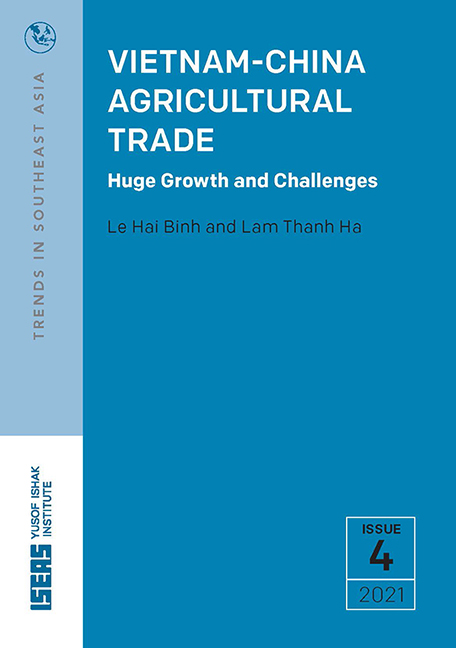Vietnam-China Agricultural Trade Huge Growth and Challenges
Published online by Cambridge University Press: 28 October 2021
Summary
EXECUTIVE SUMMARY
• Agricultural products are one of Vietnam's most important exports, contributing considerably to the overall export turnover of the country.
• Vietnam's agricultural exports are easily affected by external factors. It is overly dependent on the Chinese market, and its agricultural products do not as yet meet strict global standards.
• Challenges facing Vietnam's export of fruits and vegetables to the Chinese market include technical barriers, long risk assessment periods, restrictions on products exported through official quotas to the Chinese market, and frequent changes in China's policy on border crossings.
• The ongoing COVID-19 pandemic has underscored the importance of market diversification to this sector.
• To further develop its agricultural export sector, Vietnam needs to gather and consolidate information on import standards and guide its farmers on product quality requirements. Besides, efforts to gradually diversify its markets are essential for it to avoid being dependent on a small number of partners and markets.
• Vietnam's participation in international organizations such as ASEAN, APEC, WTO, and AEC exemplifies its increasingly active efforts at seeking new development opportunities. The seventeen bilateral and multilateral free trade agreements which have been signed by Vietnam partly demonstrates efforts at achieving market diversification.
- Type
- Chapter
- Information
- Vietnam-China Agricultural TradeHuge Growth and Challenges, pp. vii - viiiPublisher: ISEAS–Yusof Ishak InstitutePrint publication year: 2021



